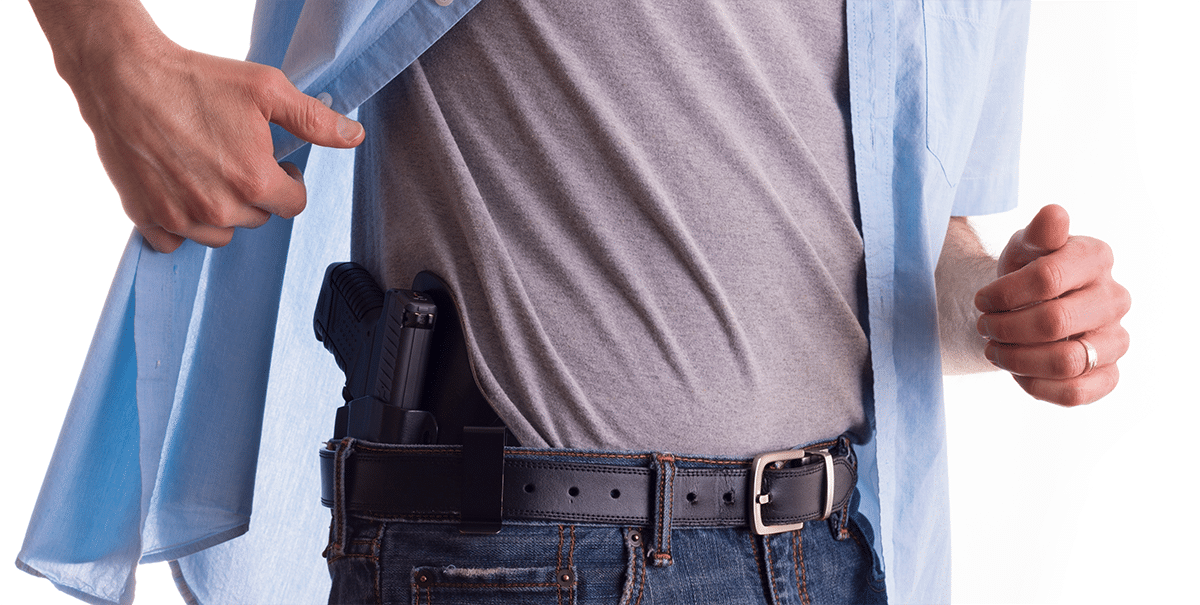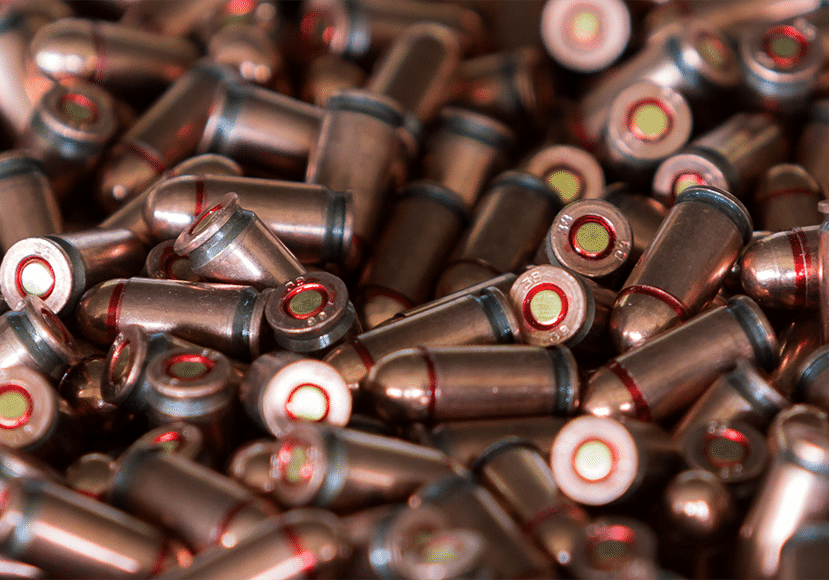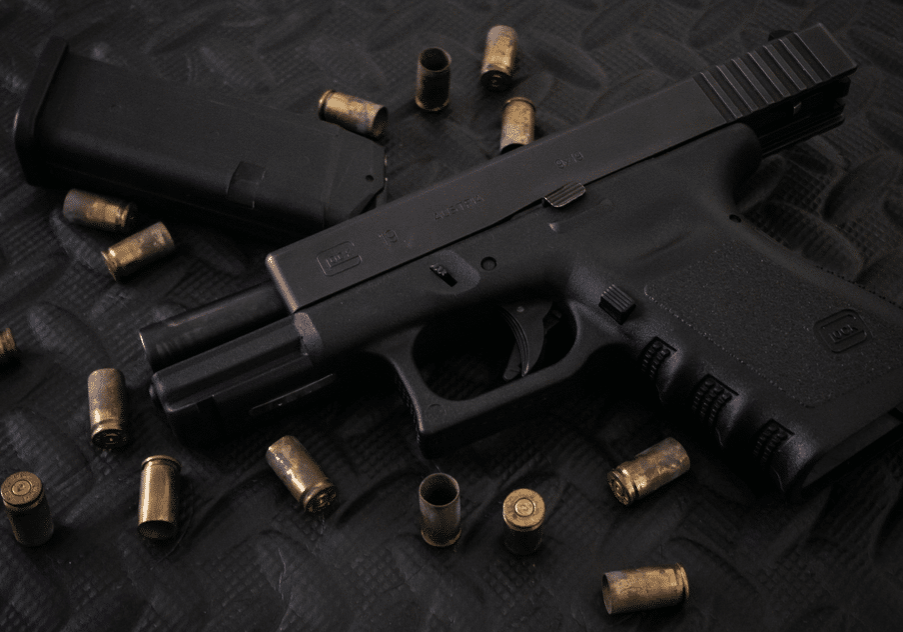5 Tips for Safe Concealed Carry

Millions of Americans have made the decision to take their personal security into their own hands by carrying a concealed firearm. Though the specific motivations undoubtedly vary, the general hope is that by concealed carrying, they will be able to defend themselves and others from bad actors seeking to do harm.
Concealed carrying is a decision not to be taken lightly; bringing a firearm with you out into the world requires discipline and must only be done responsibly. The following article is intended to give beginner tips for people interested in concealed carrying, covering everything from how to choose a concealed carry firearm and a holster to basic procedures for keeping you and others safe. Taking these tips to heart will go a long way toward making you a proficient concealed carrier.
Without further build-up, let’s get into it.
1) When Choosing a Concealed Carry, Focus on Comfort and Capacity
The first choice that every concealed carrier must make is what firearm they are going to carry. The abundant options currently on the market is both a blessing and a curse: the perfect pistol for you is out there, but it won’t be easy to choose.
Of course, concealed carry firearm choice comes down to personal preference; so rather than telling you which firearm you should get, I’ll instead talk about the two biggest factors to consider in your decision: comfort and capacity.
Comfort means choosing a firearm that feels both comfortable to shoot and to concealed carry. Sometimes these two traits can come into conflict with one another. For example, some “pocket rockets” might be comfortable to carry in your holster but might be too small for you to comfortably shoot. In this case, you might need to go with a slightly larger firearm, such as a Glock 19 compact pistol, in order to have a better balance between the two types of comfort.
On the other hand, you might love the way a full-size Glock 17 feels in your hands but feel downright suffocated with it in your inside the waistband holster.
Another part of comfort has to do with concealment. Ideally, you do not want anyone to know that you are carrying a firearm. This keeps you from becoming a target should an attack actually occur. It also prevent people who aren’t familiar with firearms or carry laws from freaking out.
Full-size firearms often print (or outline) through clothing and are therefore not the best choice for concealed carrying, even if they are the size you feel most comfortable shooting.
The next factor to consider is magazine capacity. Compact and sub-compact handguns are smaller, more comfortable, and more discrete, but they often come with smaller capacities as well—think 6 to 8 rounds. Balancing capacity with comfort will help you make a well-rounded choice.
Readers who are somewhat familiar with guns might be surprised to see that I’m not putting greater emphasis on handgun calibers. Caliber is certainly an important consideration, but in my mind, most caliber concerns ultimately come back to comfort and capacity: choose a caliber that you are comfortable shooting, comfortable carrying, and that provides you with a sufficient number of rounds.
The last point about capacity may need a little more explanation. Smaller-caliber pistols like 9mm will generally be able to hold more rounds than larger calibers like .45 ACP. You really don’t want to have to reload in the middle of a firefight, which is why having adequate capacity is so important.
For those of you looking for more direct advice about caliber, you can’t go wrong with 9mm. It’s the standard caliber for countless military and law enforcement sidearms around the world and provides an excellent balance between all of the above considerations.
2) Experiment With Different Holster Styles/Carrying Positions
Once you’ve chosen your preferred concealed carry firearm, the next step is to pair it up with a quality concealed carry holster. Holsters come in many shapes and sizes, and it’s important to experiment with a few different models before settling on the one that’s right for you.
Here are the 5 most common holster styles:
- Inside the belt (IWB) - As the name suggests, these holsters are clipped onto a belt, with the holster itself set in between your pants and your underwear. IWB holsters offer excellent concealment but can be less comfortable than other styles and may be more difficult to draw from.
- Outside the belt (OWB) - Outside the belt holsters, by contrast, are similarly clipped to a belt but are kept on the outside of the pants. These holsters are more comfortable and easier to draw from but are significantly more difficult to conceal without printing.
- Belly band - These holsters are integrated with a band of fabric that you wrap and secure around your waist. Though not as sturdy or protective as the above options, belly bands can be useful for times in which you won’t be wearing a belt.
- Shoulder holsters - Shoulder holsters wrap around your shoulders like a pair of backpack straps. The gun is generally kept on your supporting side (left, if you’re right-handed, or right, if you’re left-handed). This holster style can be a good choice if you frequently wear jackets, but they offer zero concealment without a jacket and are somewhat less reliable than other options.
- Ankle holsters - Finally, ankle holsters are a good option if you prioritize concealment above all else. The risk of printing is very low assuming you are wearing pants, but this comes at the cost of a much slower draw speed.
Aside from the style, other characteristics to look for in a holster include comfort, durability, retention (the degree to which the holster keeps your firearm from falling out), concealability, and trigger coverage. This last characteristic is particularly important: you want a holster that completely covers your firearm’s trigger to keep it from accidentally snagging while holstering or unholstering. While we’re on the subject, it’s also important that you practice good trigger discipline and do not put your finger on the trigger until you are absolutely sure you need to fire!
Assuming you decide on one of the waist-carrying options, you will also need to decide the position in which you want to carry. The main carrying positions are appendix (roughly 1 or 2 o’clock on your body) and strong-side hip (3-5 o’clock for right-handed shooters, 7-9 for lefties).
Appendix is great because your firearm is easily accessible from either hand and can even be retrieved while sitting down. On the other hand, appendix carry requires you to keep your firearm pointed at your groin at all times—which is a little disconcerting. Appendix carry also isn’t the most comfortable and can sometimes be awkward for concealment depending on the clothing you’re wearing.
Hip carry, by contrast, allows for extremely quick draws, is easy to conceal, and is often more comfortable than appendix carry. The tradeoff is that it is difficult to draw with your supporting hand or while sitting down. Hip carry is also the most common concealed carry position, which could theoretically be exploited by an attacker attempting to disarm you.
I recommend experimenting with both carrying positions until you find the one that you feel most comfortable with. Finding a holster and a carrying position that you like are crucial steps toward becoming a confident concealed carrier. If you don’t like your holster or you feel awkward while carrying, you likely won’t bother to carry at all.
3) Practice, Practice, Practice
Once you’ve gotten your basic concealed carry setup, the next step is to practice with it at home (dry fire) and at the range. The amount of time you should practice before actually concealed carrying largely depends on your overall level of experience, both as a concealed carrier and as a general gun owner. If you’ve been shooting since you were a kid and know how to handle a firearm safely, then you’ll likely need less time than someone who is learning to use their very first firearm.
I, like many others in the firearms community, put a premium on safety. The whole point of carrying a concealed firearm is to make you and the people around you safer. But unlike many other safety tools—a first aid kit, for example—a firearm in untrained hands can sometimes do more harm than good. Take this responsibility seriously and put in the necessary practice before taking your firearm out into the world.
So how should you practice? Concealed carry practice can look like a lot of things, from simply carrying your firearm in your holster while walking around the house, getting used to the way it feels and how to most comfortably conceal it, to practicing drawing and firing at the range (be sure your range permits this before trying). You can also practice your draw at home and simply dry fire, after confirming that your firearm is unloaded. Though this won’t do much for your aim directly, getting your draw down pact will make life a lot easier when the time comes to quickly aim at something.
4) Adhere to Basic Safety Procedures
In addition to putting in sufficient practice at home and the range, there are other safety procedures that all concealed carriers should follow. Here are a few of the most important:
- When disarming yourself for the day, remove your entire holster first before removing the firearm. This is a simple safety precaution to ensure you don’t accidentally fire your weapon after a long day. Removing the whole holster first ensures your finger will stay off the trigger and will prevent any potential accidents.
- Cycle out your defensive ammunition periodically, at least once a month. Assuming you don’t regularly shoot with your concealed carry firearm at the range, it’s possible that the ammunition you’ve loaded into it has been in there for some time. Concealed carry ammo is exposed to the elements much more than ammo in a box, including rain/snow, humidity, heat—even the sweat from your body. As such, it’s important to inspect your ammo for any visible corrosion or wear and replace it with fresh ammo if necessary. I recommend taking this as an opportunity to shoot with your defensive ammo at the range, which is doubly beneficial as it ensures you’ll be comfortable using it in a real self-defense scenario.
- Last but not least, follow the four cardinal rules of gun safety:
- 1) Treat all guns as if they are always loaded.
- 2) Don’t point your gun at anything you are not willing to destroy.
- 3) Keep your finger off the trigger until your sights are on target and you have made the decision to fire.
- 4) Be sure of your target and what’s behind it.
These rules are always important but are especially so while concealed carrying. Take them seriously.
5) Know the Law and Use Your Firearm Only When Necessary
Having a concealed carry permit does not give you permission (or make it wise) to go full John Rambo. It is important to keep in mind that there are still significant limitations on when you can and should use your firearm.
Be sure to check the relevant local, state, and federal laws regarding concealed carrying. Make sure you know the locations in which you are and are not allowed to carry. And finally, take some time to research what will happen if you ever have to use your firearm for self-defense. Doing all of this will ensure that you never use your concealed carry weapon inappropriately and face legal ramifications for doing so.
Conclusion
Concealed carrying is a heavy responsibility that should be taken on with care and respect. It is also extremely empowering; I and many others experience great satisfaction from knowing that I am prepared to step in should anything happen to myself or to others around me. Follow the above tips and take the time to become comfortable while carrying, and likewise, you will be a valuable member of society helping to keep yourself and others safe.




